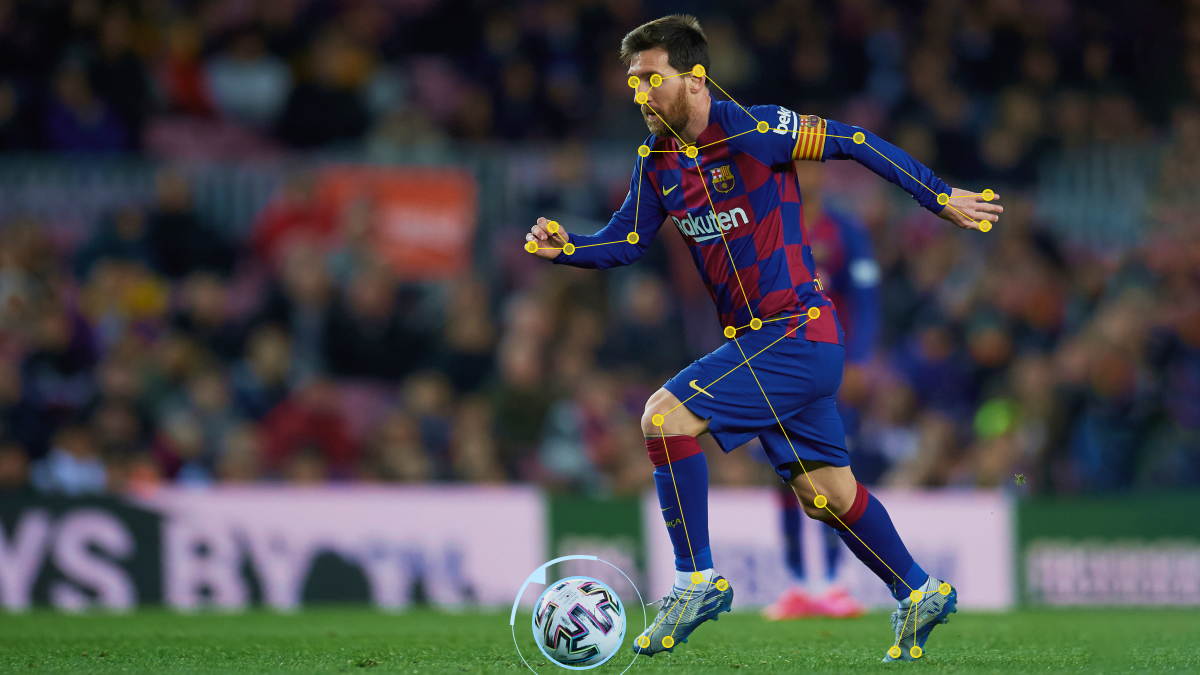How AI and Data Annotation Are Improving Football Officiating
There are many calls made by referees that are still debated by fans even to this day. This includes the controversial goal given to George Hurst in the 1966 World Cup Final, which allowed him to score a hat trick. Who can forget Diego Maradona’s famous handball in 1986, which resulted in a goal against England? FIFA is trying to not only reduce such infamous moments but to help out the referees who often do not have a clear sight of what’s going on. This is why the officials at FIFA have been experimenting with new AI technology that can track player motions and allow the referees to make more accurate offside calls.
Let’s take a closer look at how AI will be used in this year’s World Cup and the types of data annotation required to train such technology.
Leveraging AI to Track Player Motions
FIFA has already announced that they will be using AI-powered cameras in this year’s world cup. They plan to implement a semi-automated system that involves placing a sensor into the ball itself and relaying its position on the field 500 times per second. There will also be 12 computer vision cameras mounted in various locations across the stadium that use 29 points on the players’ bodies to track their motions. This information will be used to alert officials when a player is in the offside position meaning that they’re nearer to the other team’s goal than their second-last opponent and receiving the ball. When an official in the control room receives such an alert, they will validate it and then notify the referees on the pitch.
According to FIFA, this will not have any effect on the timing of the game. The entire process will happen within a few seconds, and the offside call can be made faster and with greater accuracy. Also, the data generated by the ball will be used to create animations which will be displayed on the screens in the stadium and will also be broadcasted to fans all over the world.
Similar AI Technology is Being Used to Create Football Video Games
Have you ever wondered how video game companies are able to create such realistic games with the players moving so naturally and with such fluidity? In the past, companies relied on professional athletes in motion-capture suits to perform various actions involved in dribbling and passing the ball. They would also need to run, make a pass and do pretty much anything they would normally do on a football field. However, such processes are very costly and time-consuming. Such work is very tedious, and it’s also not practical. As the fidelity of motion capture technology increases, so do the file sizes. It’s also not possible to collect every possible motion combination.
This is why video game companies decided to take video footage from actual football matches and annotate them with a method called motion sequence segmentation. In general, human motion data often comprises multiple actions in a sequence, and temporal segmentation of a human sequence into plausible motion primitives is of crucial importance to complex motion annotation. The data annotators would need to identify the independently moving objects (pixels) in the video and separate them from the background motion.
Now, if we wanted to go a level deeper and recreate details like facial expressions, this would require landmark annotation. This is where data annotators place key points along the person’s face to track things like eye movements and facial expressions.
What Types of Data Annotation Would FIFA Need to Use for Their AI Technology?
There are two functions the AI system would need to do: track the movements of the ball and also the motions of the players. The data annotation process for player motion tracking would be more time-consuming because it would require the annotators to place key points on all areas of interest, which is basically the entire body of the player. Such keypoint annotation would need to be done from one frame to another, which is also time-consuming because one frame can have 30, 40, or even 60 frames per second. Therefore, if we have a video that’s, for example, one hour long, you can imagine how many frames would require annotation.

As far as tracking the ball is concerned, the data annotators would need to perform simple labeling, but it would need to be done using the continuous frame method. This method uses annotation tools that track the objects throughout the video with their frame-by-frame location. By using this method, the continuity and context are well-maintained.
Trust Mindy Support With All of Your Data Annotation Needs
Mindy Support is a global company for data annotation and business process outsourcing, trusted by several Fortune 500 and GAFAM companies, as well as innovative startups. With nine years of experience under our belt and offices and representatives in Cyprus, Poland, Romania, The Netherlands, India, and Ukraine, Mindy Support’s team now stands strong with 2000+ professionals helping companies with their most advanced data annotation challenges.




